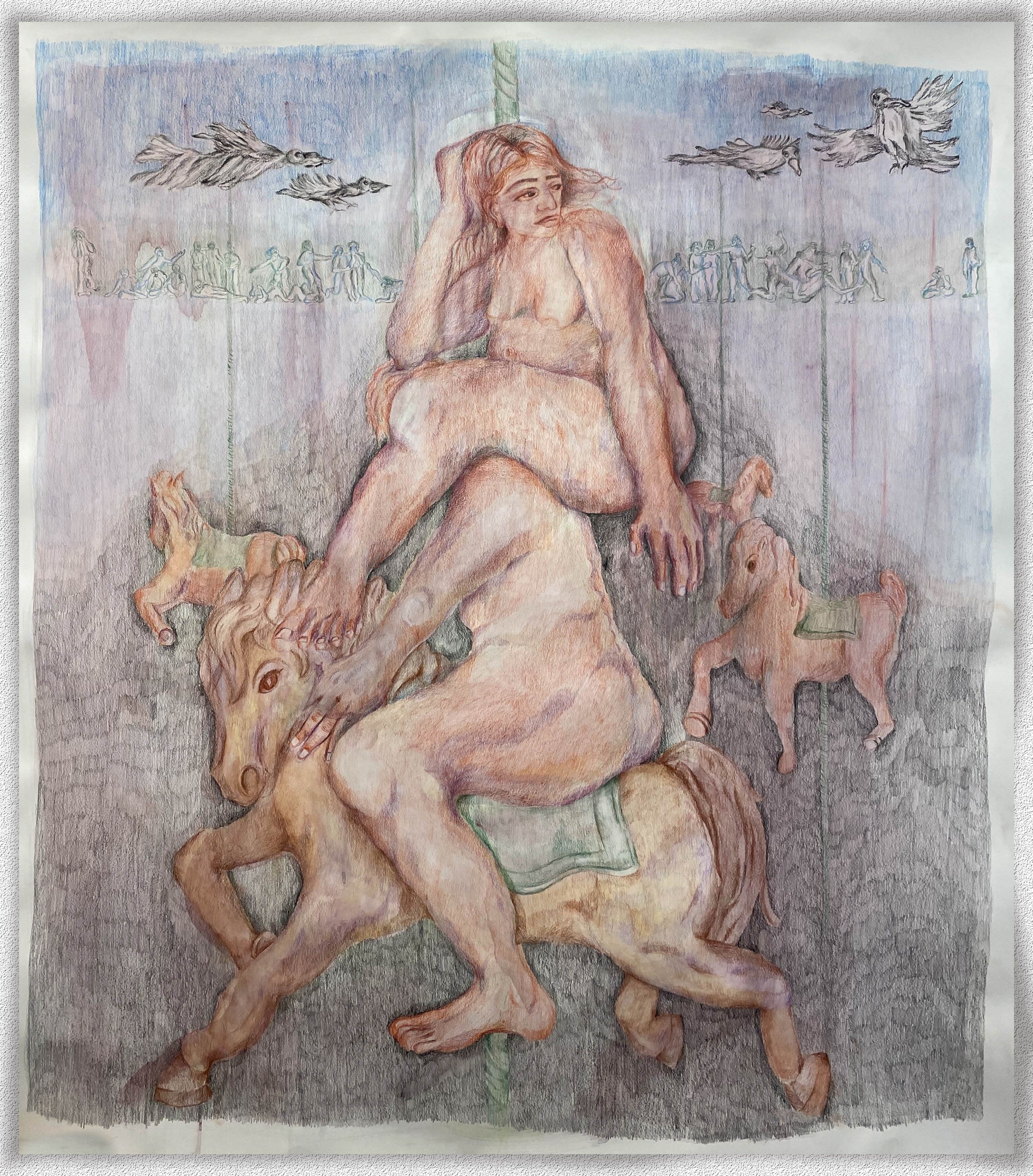SHAILEE MEHTA
@SHAILEEMEHTAA
Mehta is a fabulous young artist who studied at UAL @unioftheartslondon and The Slade School of Fine Art @sladeschool @sladepainting
Her current body of work is a beautiful series of paper pieces that adorn her dynamic instagram feed, exploring the day to day role of animals, as well as their exploitation in history and mythology. It’s utterly fascinating!
“I like my work to generate an agency through evocative depictions of the everyday, while referring to the dystopian or mythological. Womanhood, nostalgia, childhood are a few themes that my work is centred around. Within this context, there are not only narratives, but also counter-narratives that lead to a certain multiplicity in the images I make.”
In our interview, we discuss artists studios, composition, gaze, into-jazz, day to day schedules and influences.
-
INTERVIEW
Shailee, tell me about your artist story. How were you trained? Tell me about your journey to where you are now?
In terms of formal education, I completed my foundation at UAL in 2016 and my BFA at The Slade School of Fine Art less than a month back. More importantly, I have an incredibly supportive mother who is an artist herself and has encouraged me to draw (and drawn with me) for as long as I can remember. My sister-in-law is a sculptor from RISD who has been a mentor to me for about seven years now. I have always had strong, bold and incredibly talented women in my life who have contributed to my artistic education as much as any other art institution and led me to where I am right now.What memorable responses have you had to your work? And which artwork would you like people to remember you for?
Responses that tap into very intimate conversations with oneself, such as being in solitude and incredibly aware of your body, or moments of anxiety and sadness are always striking and stay with me. Another recurrent comment has been about how my compositions are a lot about looking, that the gaze of my figures keeps the viewer locked into the painting, something I want to definitely sustain in my practice.
What are you working on now?
I am working on a series of paper pieces that explores the role of animals in our day-to-day lives and how humanity has exploited them- historically, mythologically and in present-day politics. I have also been looking at rituals of cooking, the act of eating and its relationship to existing narratives of womanhood.What would be your dream project?
This is a very open-ended question and I don’t think I have a concrete answer for this, but I eventually imagine myself working with the outdoors, with my figures and narratives existing outside of the studio space or gallery walls. How and when this will materialise, is an interesting question in itself which I am excited to investigate.
What is your studio like? Where do you like to create best? What are your artist necessities? What could you not live without?
My studio is currently my living room. I have always liked high ceilings with loads of sunlight and a permeable space with easy access to the outdoors. A residency I was part of in Spain comes to mind, where our studio was located in the countryside, outside a small village near Seville.What do you listen to while you work?
Lately, it’s just been a variety of south-asian ghazals, sufi music, folk-fusion, indo-jazz and old bollywood classics. The Three Seas Band, Abida Parveen, Farida Khanum, to name a few.
What does an average working day look like to you?
Depends on the day, but a constant back and forth between stretches of painting, being distracted by an irrelevant tangent my search for visual references takes me on and drawing in a notebook meant for writing.
Who or what are your biggest influences, and how do you find them? How do these come out in your work?
This year it has been Bhupen Khakhar, an Indian painter who was one of the very few openly queer artists in the 1980s. His way of dealing with the surface of the canvas, colour and non-linear narratives is definitely something that informs the way I characterise the narrative in my paintings. Other than Khakhar, a range of performance artists such as Tejal Shah, Adrian Piper, Sonia Khurana and Sutapa Biswas who engage with notions of otherness in their practises, are artists I keep going back to as well.
What do you want your work to say? What are the main themes and motifs running through your work? Is there a narrative that runs throughout?
I like my work to generate an agency through evocative depictions of the everyday, while referring to the dystopian or mythological. Womanhood, nostalgia, childhood are a few themes that my work is centred around. Within this context, there are not only narratives, but also counter-narratives that lead to a certain multiplicity in the images I make.
What is one thing people would be surprised to know about you?
I am not sure if this is surprising at all but I am incredibly restless and impatient, which is why I have been working with printmaking this year. It certainly slows you down (in the best possible way) and asks for confidence in the process that painting is usually quite lenient with.
Favourite current practicing female artists (as many as you like?)?
Tala Madani, Kiki Smith, Sonia Khurana, Sosa Joseph, Gauri Gill, Rajyashri Goody
